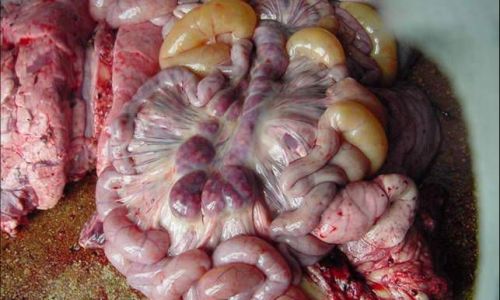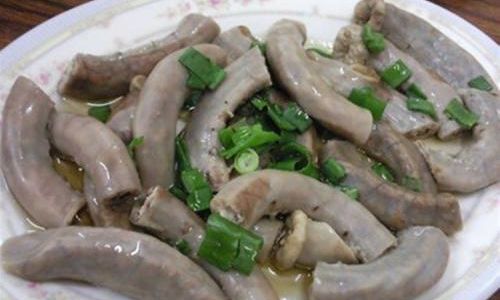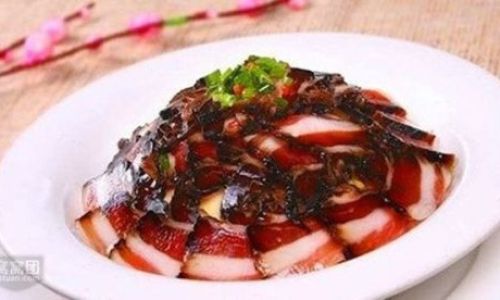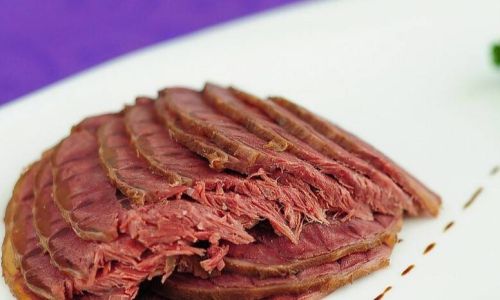Table of content
- Color
- Surface Texture
- Casing Integrity
- Filling Consistency
- Fresh Aroma
- Off-Odors
- Strong Smells
- Firmness
- Moisture
- Casing Feel
- Expiry Date
- Storage Instructions
- Ingredients List
- Batch Number and Manufacturing Date
- Mold Growth
- Liquid Accumulation
- Off-Colors and Textures
- Unpleasant Odors
- Proper Storage
- Refrigeration
- Freezing
- Handling
Introduction
Pork sausage, commonly known as “fenchang” in various dialects across China, is a beloved delicacy enjoyed by many for its unique flavor and texture. Whether grilled, steamed, or stir-fried, fenchang offers a delightful culinary experience that satisfies both the palate and the soul. However, like any perishable food item, ensuring the freshness of fenchang is crucial to maintaining its quality and safety. In this comprehensive guide, we will explore various methods and techniques to help you determine the freshness of pork sausage, ensuring that every bite you take is not only delicious but also safe to consume.

Understanding Pork Sausage (Fenchang)
Before diving into the specifics of freshness determination, it’s essential to understand what fenchang is and its basic characteristics. Fenchang, a type of Chinese sausage, typically consists of pork meat, fat, seasonings, and sometimes rice or flour as binders. It is often seasoned with soy sauce, sugar, salt, and spices, giving it a rich, savory flavor. The sausage is then stuffed into casings, usually made from natural intestines or synthetic materials, and either dried, smoked, or cooked to preserve it.
The freshness of fenchang depends on several factors, including the quality of the ingredients used, the processing methods employed, and the storage conditions maintained. Poor-quality ingredients, improper processing, or inadequate storage can lead to the deterioration of the sausage, making it unsafe for consumption.
Visual Inspection: The First Line of Defense
One of the simplest and most effective ways to determine the freshness of fenchang is through visual inspection. Here are some key indicators to look for:
Color
Fresh fenchang should have a uniform, appetizing color. Depending on the processing method, it can range from a light brown to a darker, almost black hue. However, if the sausage appears discolored, with patches of mold, dark spots, or an unnatural grayish tone, it is likely not fresh.
Surface Texture
The surface of fresh fenchang should be smooth and slightly tacky to the touch. If it feels slimy, sticky, or has a tacky residue that doesn’t come off easily, it may be a sign of spoilage. Additionally, cracks, dry patches, or an overly wrinkled appearance can indicate that the sausage has been stored for too long or under poor conditions.
Casing Integrity
The casing of the sausage should be intact, with no signs of punctures, tears, or leaks. A damaged casing can allow bacteria and other contaminants to enter the sausage, accelerating spoilage.
Filling Consistency
When gently pressed, fresh fenchang should have a firm yet slightly yielding texture. If it feels overly soft, mushy, or has pockets of liquid, it may be a sign of spoilage. Conversely, if it is excessively hard or dry, it may have been over-dried or stored for too long.
Olfactory Assessment: Trust Your Nose
Smell is another powerful sense that can help you determine the freshness of fenchang. Fresh sausage should have a distinct, pleasant aroma that combines the flavors of the meat, seasonings, and any smoking or cooking processes. Here’s what to look for:

Fresh Aroma
A fresh fenchang will have a savory, slightly sweet aroma that is inviting and appetizing. This aroma should be consistent throughout the sausage, with no off-putting odors.
Off-Odors
If the sausage smells sour, musty, ammonia-like, or has any other unpleasant odors, it is likely not fresh. These odors are indicative of bacterial growth, spoilage, or improper storage conditions.
Strong Smells
While fenchang should have a noticeable aroma, it should not be overly strong or pungent. An overly strong smell can be a sign of excessive seasoning, preservatives, or spoilage.
Tactile Examination: Feel the Difference
Touching the sausage can also provide valuable insights into its freshness. Here’s how to use your sense of touch to assess the quality of fenchang:
Firmness
Fresh fenchang should have a firm, yet slightly elastic texture. When gently pressed, it should spring back slightly without feeling mushy or collapsing.
Moisture
The surface of the sausage should feel slightly moist, but not wet or slimy. Excessive moisture can be a sign of improper packaging or storage, leading to spoilage.
Casing Feel
The casing should be firm and slightly stretchy, with no signs of softening or cracking. A soft or brittle casing can indicate that the sausage has been stored for too long or under poor conditions.
Checking the Packaging and Labels
If you’re purchasing fenchang from a store or market, the packaging and labels can provide valuable information about its freshness and quality. Here’s what to look for:

Expiry Date
Check the expiry date or “best before” date on the packaging. While this date is not a guarantee of freshness, it can give you an indication of how long the sausage has been on the shelf.
Storage Instructions
Follow the storage instructions provided on the packaging to ensure that the sausage is kept in optimal conditions. Deviations from these instructions can lead to spoilage.
Ingredients List
Examine the ingredients list to ensure that the sausage contains only high-quality ingredients. Avoid sausages with added preservatives, artificial colors, or flavors, as these can mask the signs of spoilage.
Batch Number and Manufacturing Date
If available, note the batch number and manufacturing date. This information can be useful if you need to trace the sausage back to its source in case of quality issues.
Checking for Signs of Spoilage
In addition to the above methods, there are specific signs of spoilage that you should be aware of when assessing the freshness of fenchang:
Mold Growth
Any visible mold growth on the sausage is a clear sign of spoilage. Discard the sausage immediately if you notice any mold.
Liquid Accumulation
If there is an excessive amount of liquid in the packaging or if the sausage itself feels wet and leaky, it may be a sign of spoilage.
Off-Colors and Textures
As mentioned earlier, discoloration, unusual textures, or patches of dried-out meat can indicate that the sausage is not fresh.

Unpleasant Odors
Strong, unpleasant odors are a sure sign that the sausage has spoiled and should be discarded.
Storage and Handling Tips to Maintain Freshness
To ensure that your fenchang stays fresh for as long as possible, follow these storage and handling tips:
Proper Storage
Store fenchang in a cool, dry place away from direct sunlight and heat sources. If the packaging is not airtight, transfer the sausage to an airtight container or wrap it tightly in plastic wrap to prevent moisture loss and contamination.
Refrigeration
For longer storage, fenchang can be refrigerated. However, be sure to consume it within a few days of refrigerating, as prolonged storage can affect its texture and flavor.
Freezing
For extended storage, fenchang can be frozen. Wrap it tightly in plastic wrap or place it in an airtight container before freezing to prevent freezer burn. Use within a few months for best quality.
Handling
When handling fenchang, always wash your hands thoroughly and use clean utensils to avoid cross-contamination. Avoid leaving the sausage out at room temperature for extended periods, as this can promote bacterial growth.
Conclusion
Determining the freshness of pork sausage (fenchang) involves a combination of visual inspection, olfactory assessment, tactile examination, and checking the packaging and labels. By paying attention to these factors, you can ensure that the fenchang you consume is not only delicious but also safe and of high quality. Remember, proper storage and handling practices are crucial in maintaining the freshness and safety of your sausage. With these tips in mind, you can enjoy fenchang with confidence, knowing that every bite is as fresh and delicious as it should be.






0 comments